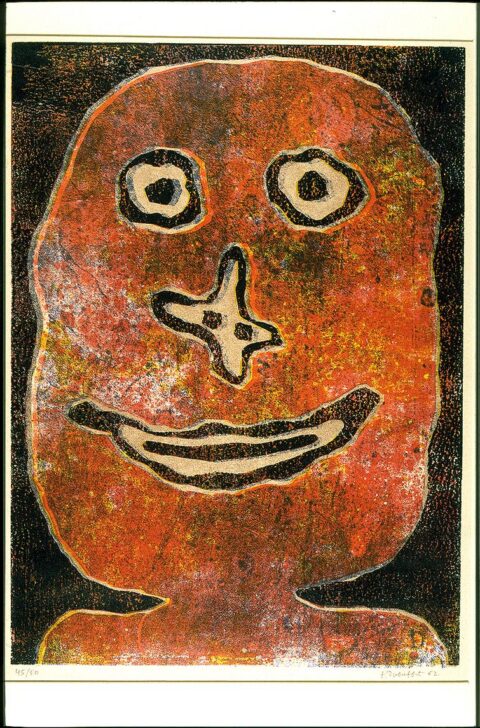Sourire (A Smile)
Jean Dubuffet

Description
After training for seven years as a painter, Dubuffet gave up art and worked for twenty-two years as a wine merchant. He believed that the fine art he saw around him paled in comparison with the humble activities of the average person. He resumed painting in 1942, by which time European cultural traditions had become so discredited by the upheaval and atrocities of World War II that he was drawn to forms created outside the tradition of fine art, particularly urban graffiti, tribal art, and the creations of children and the insane. Dubuffet wrote, "In my paintings, I wish to recover the vision of an average and ordinary man...without using techniques beyond the grasp of an ordinary man." Dubuffet created clotted surfaces by mixing oil paint with grit and urban detritus. By subverting the viewer's expectations of beauty and by elevating the mundane, Dubuffet called into question many of the assumptions on which art had traditionally been based.
In Sourire, Dubuffet translated his sand-mixed-into-oil technique into this lithograph on paper. The work, like his paintings, recalls his creation of the art brut (raw art) style to create a work that is easily approachable by the viewer and well within the viewer's grasp to create.
Sean Ulmer, "A Mater of Degree" 11/2001
Usage Rights:
If you are interested in using an image for a publication, please visit https://umma.umich.edu/request-image/ for more information and to fill out the online Image Rights and Reproductions Request Form.